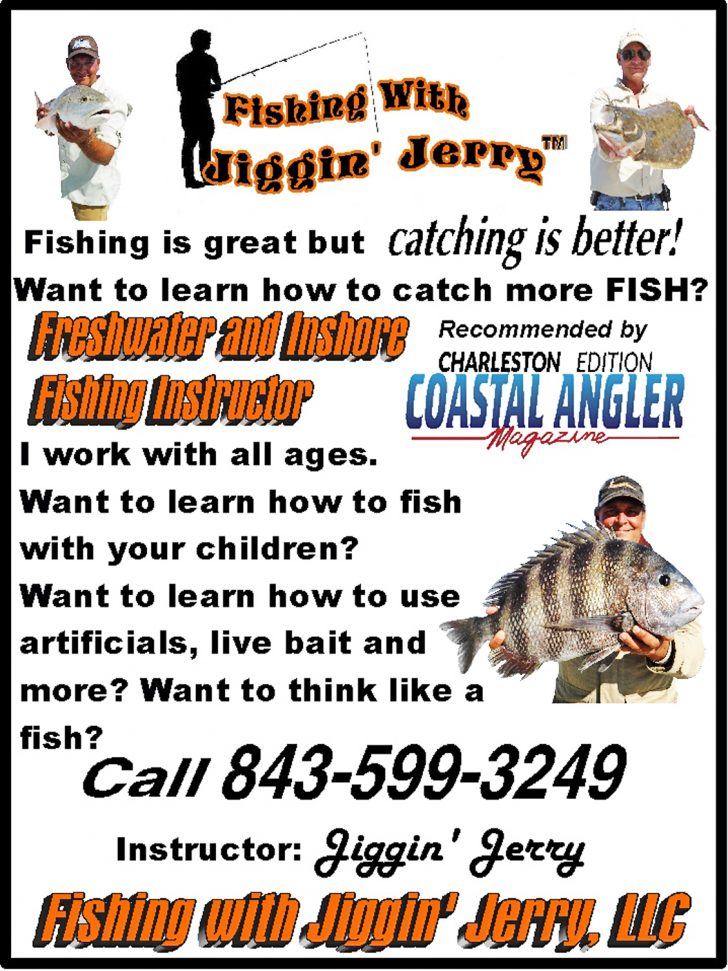Our waters are warming up and soon the Finger Mullet will be running.
Young Shrimp will be crawling and swimming their way around the rivers and creeks.
A popular method of fishing over structure and Oyster beds to target game fish like Flounder, Spotted Seatrout and Red Drum is using a float.
We are on our way into our summer months for fishing. Our waters are warming up and soon the Finger Mullet will be running, young Shrimp will be crawling and swimming their way around the rivers and creeks, and the Mud Minnows, Shrimp and young Finger Mullet will be hiding all through our Oyster beds.
Our inshore game fish know this as well, but whether you are fishing off of a boat, a pier, a dock or a bank, Oyster beds and structure under the water are hard to fish around.
You can throw your Carolina rigs with Mud Minnows, Finger Mullet and Shrimp amongst the structure, but in most cases, you will find yourself hung up and stuck, losing a lot of terminal tackle and bait.
A popular method of fishing over structure and Oyster beds to target game fish like Flounder, Spotted Seatrout and Red Drum is using a float.
There are all kinds of floats that can be used, also known as bobbers. One of the most popular of inshore floats is the popping cork.
They call them a popping cork because when you jerk the fishing rod, the popping cork slides along a small metal shaft, making a clattering sound that attracts nearby game fish because that sound imitates the sound that occurs when a fish is feeding off of the top of the water.
Some floats are cupped at the top, and when twitched or pulled, make a popping sound on the top of the water, accomplishing the same thing.
Then there are torpedo floats. You can find them in all sorts of weights and sizes. They are meant to pull through the water smoothly without making much sound or causing much friction while reeling in your line.
Torpedo floats are often used to throw very light lures and live bait that would be difficult to throw on a spinning rod or bait cast rod without the assistance of the float.
The main purpose of floats is a strike indicator. When the fish strikes, the colorful float will dip under the water quickly, alerting the angler that the bait or lure has been taken, and it is time to set the hook.
The other purpose is to control the depth of your bait or lure. This is why the floats are very popular when fishing over structure or Oyster beds.
For instance, if the water over an Oyster bed is three feet, and you would like to maintain and keep your bait just above the Oyster bed so that it will stay in view of the game fish but not get stuck in the Oysters or debris, you would tie a piece of fluorocarbon line from the float to your lure around two and a half feet.
This will keep your lure or bait around six inches over the Oyster bed itself, allowing you to safely fish that location, but there are a few other things that an angler should know about when using floats.
When it comes to live bait like Finger Mullet, Mud Minnows or Shrimp being used under a float, it is important to add a weight around six inches over your bait on your fluorocarbon leader.
The weight could either be tied in like a small quarter ounce egg weight or lighter or split shot pressed on the line. The reason for this is to keep your live bait under the float and allow the bait to move in a 12-inch radius around the weight.
If the weight is not applied, the live bait will usually try to swim away, trying to tow the float in its escape. When doing so, it will bring itself to the top of the water, defeating the purpose of trying to maintain a certain depth over structure or in deeper locations.
This also helps when you are fishing in moving water, like rivers and creeks. When the cork is stationary and your rod is in a rod holder, the current will pull your float on an angle along with your bait.
This again will bring your bait to the top of the water, defeating the purpose. A weight will help keep your bait lower into the water.
Just remember when in fast moving water and you are holding your float stationary, the current will still pull your bait out on an angle from underneath your float and change the depth you intend on fishing.
It is always better to toss your float in one location and feed line out, allowing your float to flow with the current for a certain distance, and then retrieve and recast. This will allow your float and bait to move at the same speed.
When doing so, the bait will maintain its intended depth under the float and keep it in the strike zone. If you pass a game fish while using this technique, this will usually entice the fish into a strike, the float will go under the water, alerting the angler to set the hook and the fight is on!
Another thing to keep in mind when it comes to using a float is that you can rig all kinds of set ups underneath the floats. You can even make up your own.
I personally have set up double and triple inline hooks under one float and fished three Finger Mullet at the same time. The fun was coming up with the rig.
The surprise was catching three Spotted Seatrout at the same time! Believe me, it was a very exciting surprise, which put a memory and smile on my face that will last a lifetime.
So, as we move into summer and your head out to the water and you spot some attractive structure that you believe will bring in the game fish you are looking for, don’t forget to make sure you have some good old trusty floats with you because they may be the difference that can float your way to fishing success and turn fishing into catching.
I hope this helps while you are trying to get ready for the season, and remember, the right balance can make the difference.
Like I always say, good luck out there and have fun fishing!
To view some fishing adventures, go to my YouTube Channel Fishing With Jiggin Jerry.
LEAVE COMMENTS AT THE BOTTOM!
You may also enjoy reading
How To Use Vudu Shrimp – Keep It Poppin’
Artificial Intelligence – Tools Of The Trade
Becoming a Puppeteer Fisherman







